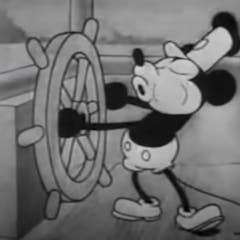
Articles on Trademarks
Displaying 1 - 20 of 35 articles

Pop-ups and limited-release menus are just some of the ways international businesses maintain their New Zealand trademarks for decades.

Kylian Mbappé has secured a commercial trademark for his celebration pose, and is looking to protect his name and quotes too.

The earliest versions of Mickey and Minnie Mouse entered the public domain in the United States at the start of this year, 95 years since they were introduced to the public.

Consumers relate to brands and logos on an emotional level. The response to Elon Musk’s rebranding of Twitter has revealed the emotional connections people have to the brands they use.

Twitter has been officially rebranded to X, in a process many would deem chaotic. But we can still try to make sense of it.

How do you determine whether one brand is similar enough to another to infringe on its trademark? Researchers propose that comparing brain scans could be an option.

Elon Musk allowing verification badges to simply be bought by anyone is an example of how powerful and misguided trust in logos can be.

Court decision protects trademarks that help consumers make informed choices.

The Russian government has essentially legalised intellectual piracy as a response to sanctions.

Trademarking a shape of a product, or proving that a competitor is passing off their product as your own, is not easy. A high-profile settlement, though, is marketing gold.

The story of invention in America typically features larger-than-life caricatures of white men like Thomas Edison while largely ignoring the contributions of women and people of color.

How Banksy’s glib response to a trademark challenge backfired and lost him a two-year legal battle.

Forced into selling his own merchandise to stop others doing the same, the artist could end up facing other similar challenges because he trademarks rather than copyrights his artworks.

The high court struck down a ban on trademarking ‘immoral’ or ‘scandalous’ words and symbols. A trademark scholar explains why that’s a good thing.

Banksy’s legal team has won an action to stop unauthorised products featuring his work alongside an Italian museum exhibition.

Have American companies just been given the green light to deploy “edgy” branding that goes way too far?

Can Iceland (the country) force Iceland (the supermarket) to give up its trademark?

The Supreme Court is considering two cases stemming from the merger of design and function that could reshape intellectual property law. Can we protect innovation without impeding fair competition?

Olympic organizers are known for fiercely protecting their many related trademarks. It helps maintain their value – but to whose advantage?

Copyright and trademark law mean that the body art inked into your skin may leave you open to an infringement lawsuit.
